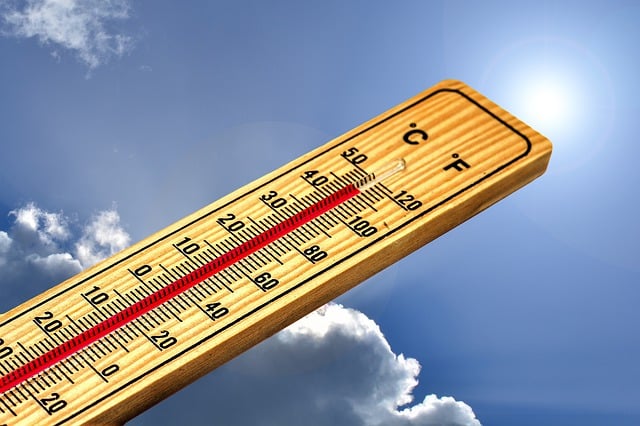Share This Article:

Climate & Comp
Sacramento, CA (WorkersCompensation.com) -- A new study from the Workers’ Compensation Research Institute (WCRI) finds that heat standards in California led to fewer work-related injuries on hot days.
The study, Impact of California’s Heat Standard on Workers’ Compensation Outcomes, looked at how California’s heat standard impacted the frequency of injuries in occupations with exposure to heat like construction, agriculture and transportation.
California is one of seven states, including Colorado, Maryland, Minnesota, Nevada, Oregon, and Washington, with heat standards for workers in heat-exposed jobs. California has standards for indoor and outdoor heat exposure and has triggers for extra protections at 80°F outdoors and 82°F indoors. The standards were implemented in 2005 after several agricultural workers died due to the heat. The emergency outdoor heat regulations were expanded to indoor workplaces in 2024.
The heat standard requires employers to provide water, shade, rest breaks, acclimatization plans and emergency response protocols during excessive heat days.
WCRI’s research found that heat-related illnesses are 11 to 18 times more frequent on days when temperatures rise about 95°F. But California’s heat standard appears to lower the risk of injury by 15 percent, the report found.
The research mirrors other research from George Washington University and the Harvard T.H. Chan School of Public Health. That study, A Nationwide Analysis of Heat and Workplace Injuries, found that not only does work injury risk start to climb when the daily heat index hits 85 degrees F it also rises sharply after the temperature reaches 90 degrees. The study found that workers in states with workplace heat exposure standards appear to have a lower risk of injury on hot days. About 28,000 workplace injuries a year can be linked to work on hot days.
“These findings underscore the value of protecting workers from extreme heat,” David Michaels, senior author and professor of environmental and occupational health at the GW Milken Institute School of Public Health, said. “A strong OSHA standard will not only prevent heat illness and death but will also prevent thousands of work injuries every year.”
The research found that heat-related work injuries tied to exposure to extreme heat were seen across almost all industries, including ones where jobs are mostly done indoors.
“Extreme heat can result in fatal heat stroke. But before we get to these levels, we found that even moderate hot conditions can subtly increase the risk of workplace injuries,” Barrak Alahmad, first author and director of occupational health and climate change program at the Harvard T.H. Chan School of Public Health, said. “A finding that was remarkably consistent in almost all industries we examined.”
The WCRI study found that employers can protect their workers by ensuring workers have access to water, and access to shade. Additionally, employers should have and be willing to implement high-heat procedures at temperatures higher than 95 degrees F, that include things like a buddy system or monitoring, water reminders, supervisor contact and extra breaks. Additionally, employers should have emergency response and heat-illness prevention plans including plans for communication with emergency services, first-aid protocols, transporting ill workers to cooler locations and maintaining a written heat illness prevention plan. Employers should also implement acclimatization protocols that introduce workers to high heat exposures over a period of two weeks and provide training for workers on the types of heat illnesses, symptoms, prevention, hydration, acclimatization, employer obligations and protocols for reporting heat illness.
According to the U.S. Bureau of Labor Statistics, 55 American workers died from environmental heat exposure in 2023, an increase from the 43 deaths in 2022. Statistics from 2024 are not available yet.
Last year, a number of employees died due to heat exposure, including a Baltimore, Md., Department of Public Works employee who died while on his trash route during an extreme heat alert; a 26-year-old farmworker who collapsed from heat stroke on a sugar cane farm; and a North Carolina postal worker who died in her postal vehicle.
According to the U.S. Environmental Protection Agency, between 1992 and 2022, nearly 1,000 workers (986) died from exposure to heat, an average of 34 deaths per year. The deaths come from across all industry sectors, but nearly 34 percent of them came from the construction sector. The total number of heat-related deaths per year during that time ranges from 11 in 1992 to 61 in 2011.
AI california case file caselaw case management case management focus claims compensability compliance compliance corner courts covid do you know the rule exclusive remedy florida glossary check Healthcare hr homeroom insurance insurers iowa kentucky leadership medical NCCI new jersey new york ohio pennsylvania roadmap Safety safety at work state info tech technology violence WDYT west virginia what do you think women's history women's history month workers' comp 101 workers' recovery Workplace Safety Workplace Violence
Read Also
- Dec 11, 2025
- Chriss Swaney
- Dec 11, 2025
- Liz Carey
About The Author
About The Author
-
Liz Carey
Liz Carey has worked as a writer, reporter and editor for nearly 25 years. First, as an investigative reporter for Gannett and later as the Vice President of a local Chamber of Commerce, Carey has covered everything from local government to the statehouse to the aerospace industry. Her work as a reporter, as well as her work in the community, have led her to become an advocate for the working poor, as well as the small business owner.
Read More
- Dec 11, 2025
- Chriss Swaney
- Dec 11, 2025
- Liz Carey
- Dec 11, 2025
- Frank Ferreri
- Dec 10, 2025
- Liz Carey
- Dec 10, 2025
- Chris Parker
- Dec 10, 2025
- Frank Ferreri




